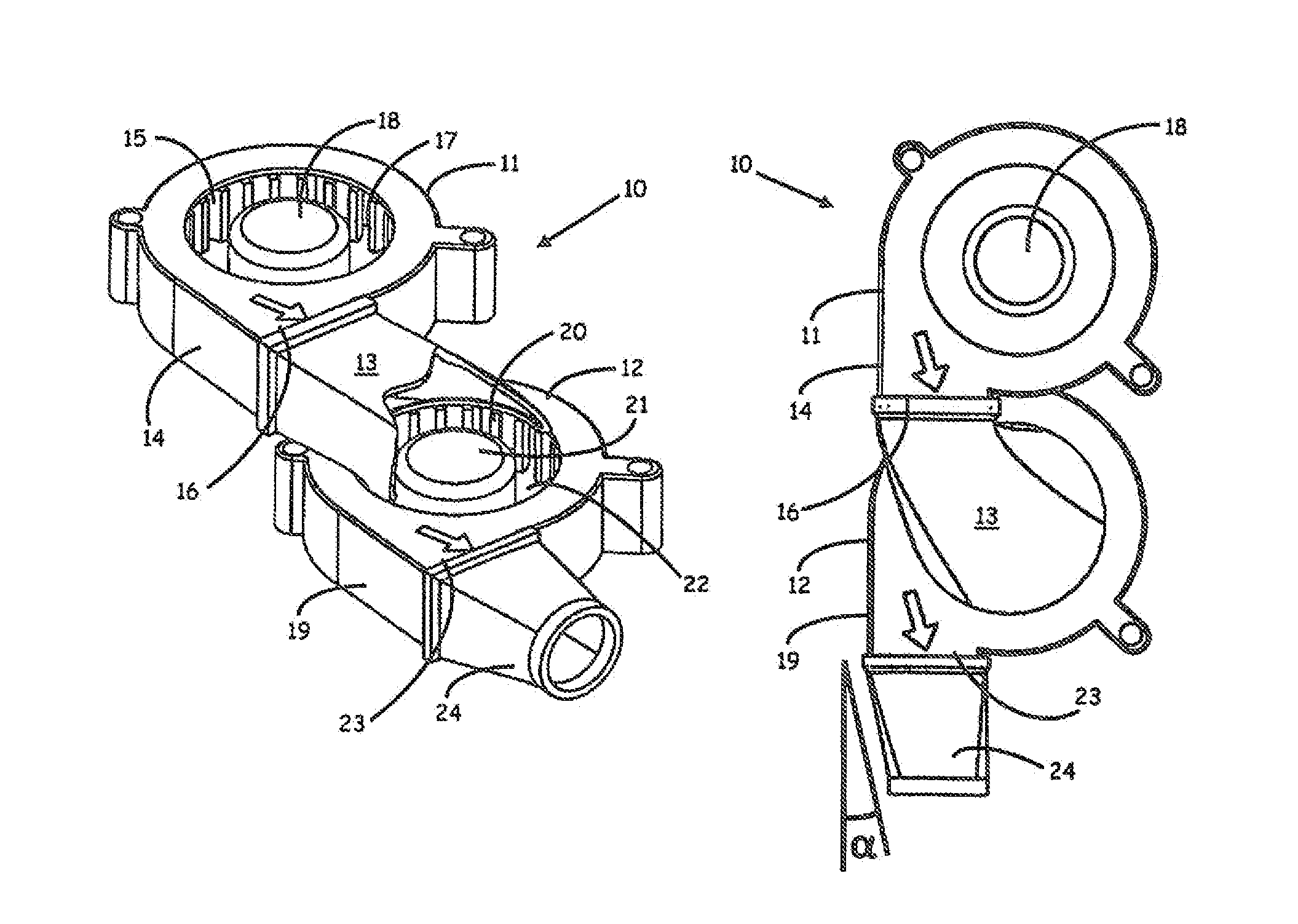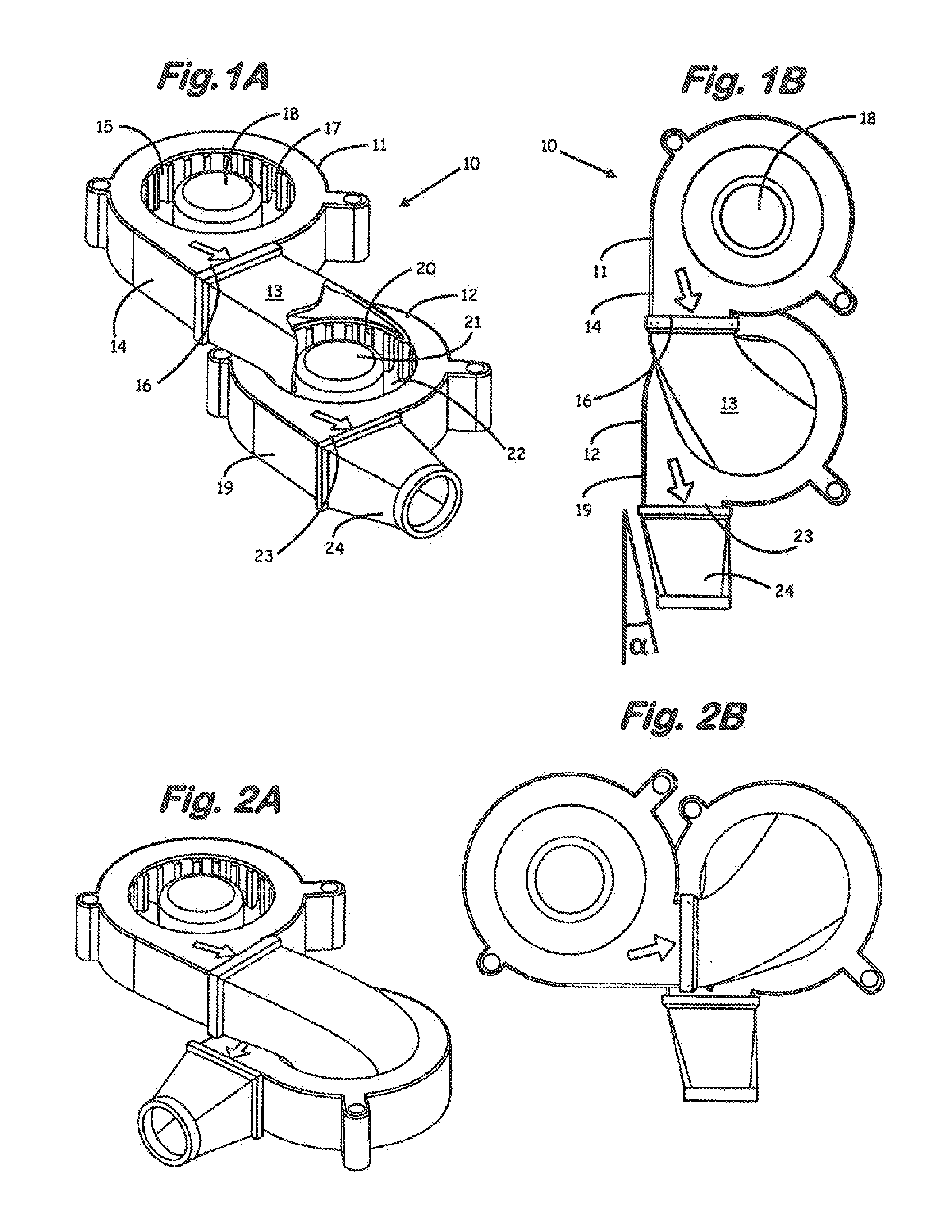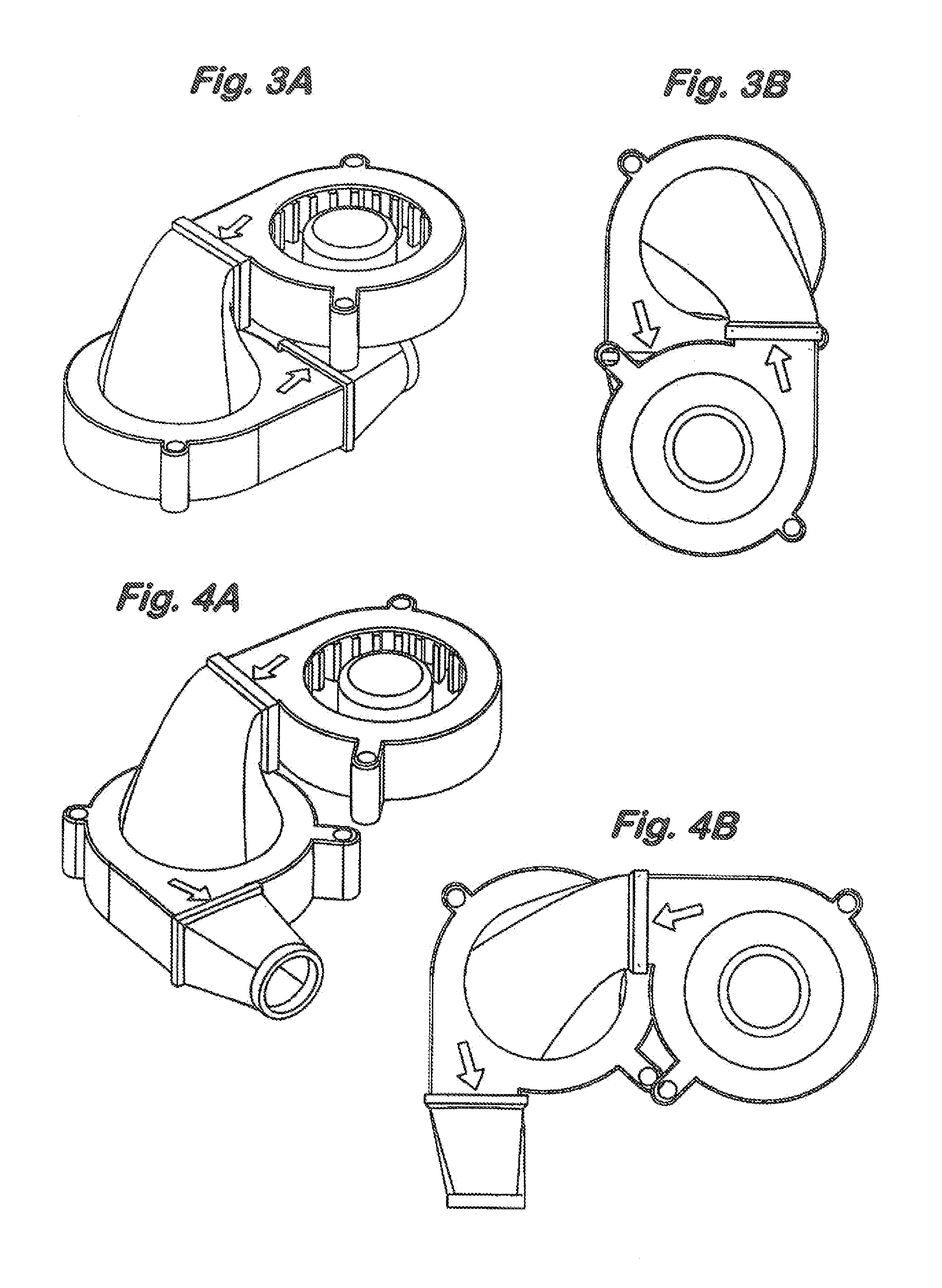Centrifugal blower system and fuel cell incorporating same
a centrifugal blower and fuel cell technology, applied in the direction of battery/cell propulsion, liquid fuel engine, cell components, etc., can solve the problems of difficult control and fine tuning of the blower output, and achieve the effect of optimum blower performance, greater power, and more power
- Summary
- Abstract
- Description
- Claims
- Application Information
AI Technical Summary
Benefits of technology
Problems solved by technology
Method used
Image
Examples
Embodiment Construction
[0037]Referring to FIGS. 1A and B, in one embodiment of the centrifugal blower system of the invention, dual centrifugal blower system 10 includes a first centrifugal blower unit 11 connected to a second centrifugal blower unit 12 through duct 13. First blower unit 11 includes a casing 14 having an axial inlet 15 and a radial outlet 16, an impeller 17 disposed within casing 14 for drawing a gaseous medium at a first pressure into axial inlet 15 and expelling gaseous medium at a second higher pressure through radial outlet 16 and an electric motor 18 for driving impeller 17. Second blower unit 12 includes a casing 19 and, as shown by the cutaway section of duct 13 in FIG. 1A, an impeller 20 disposed within casing 19 and driven by electrical motor 21 and an axial inlet 22 for receiving gas medium discharged from outlet 16 of first blower unit 11. Second blower unit further includes a radial outlet 23 and outlet gas stream housing 24.
[0038]The arrows in FIGS. 1A and 1B and in the other...
PUM
 Login to View More
Login to View More Abstract
Description
Claims
Application Information
 Login to View More
Login to View More - R&D
- Intellectual Property
- Life Sciences
- Materials
- Tech Scout
- Unparalleled Data Quality
- Higher Quality Content
- 60% Fewer Hallucinations
Browse by: Latest US Patents, China's latest patents, Technical Efficacy Thesaurus, Application Domain, Technology Topic, Popular Technical Reports.
© 2025 PatSnap. All rights reserved.Legal|Privacy policy|Modern Slavery Act Transparency Statement|Sitemap|About US| Contact US: help@patsnap.com



